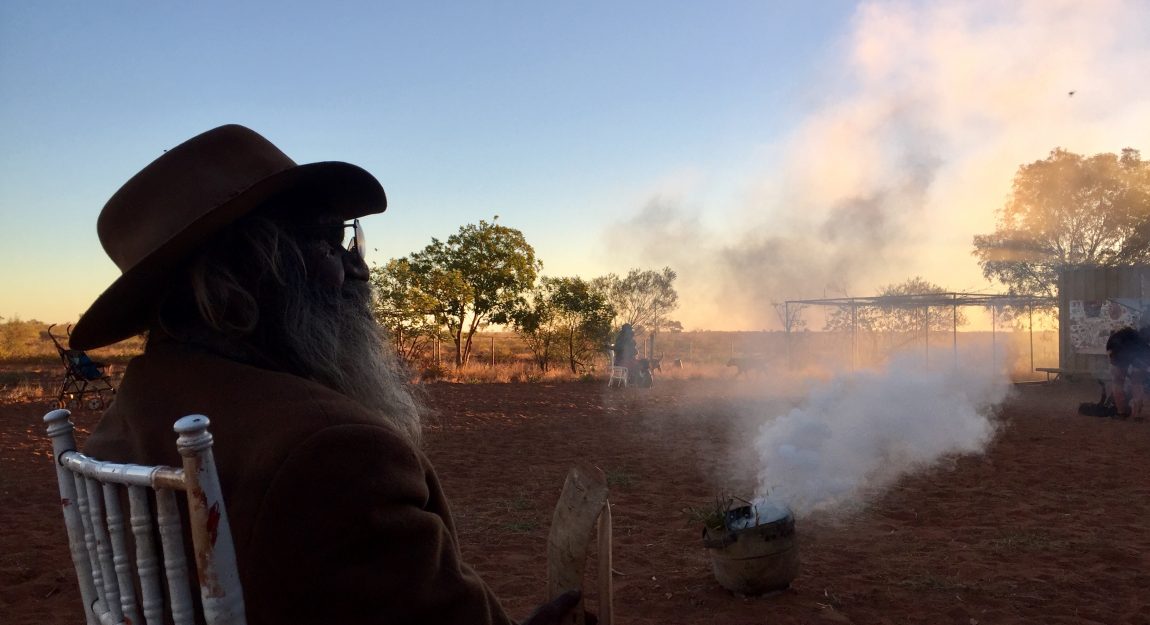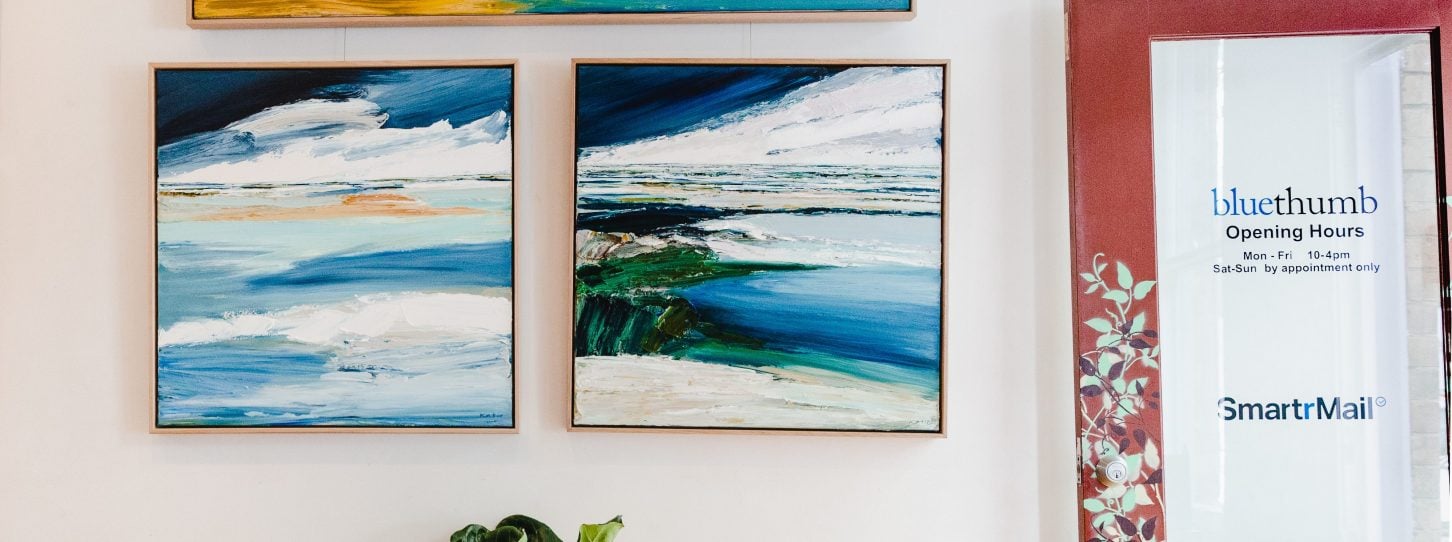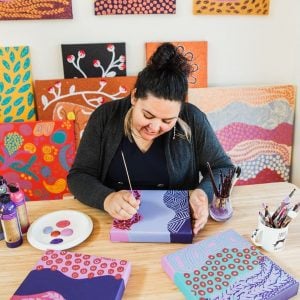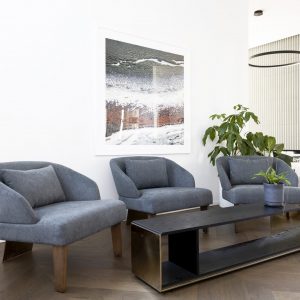Spotlight on Warlayirti Artist Helicopter Tjungurrayi
Tarnanthi Festival of Contemporary Aboriginal and Torres Strait Islander Art hits Adelaide this October. To honour the event, we spoke to Warlayirti Art Centre and senior artist Helicopter Tjungurrayi, one of the centre’s most prolific characters.

Behind the scenes: Helicopter at Warlayirti Art Centre in the process of painting one of his renowned large-scale pieces!
Situated in Balgo, the artist-run cooperative Warlayirti Art Centre supports a small community of around 400 people in Western Australia. The work of Warlayirti artists is charged by a history of cultural diversity, bringing together seven language groups and three Aboriginal communities in the Kutjungka region. What has ultimately defined Balgo art over the last thirty years is the iconic form, bright palette, and densely applied paint. Artists here paint in a confident and direct manner that reflects the rich cultural traditions of their country.
Artists can enter a meditative state and sing while painting as they remember the contours and stories of their traditional lands. Symbols of bush tucker, waterholes and sand hills are interpreted in a variety of styles. “Since water sources and bush tucker are the key to survival in desert country, they typically feature heavily in the work produced at the Warlayirti Art Centre,” the centres’ studio coordinator Poppy Lever explains.

Being part of the art centre’s community gives artists like Helicopter a safe space to tell their stories.
Like many people who now live in Balgo, Helicopter Tjungurrayi is not in his own country. After travelling across desert lands as a means of survival, Helicopter recalls his country and reconnects with his ancestral family left a long time ago by way of creation. This has become common among many of the elders at the art centre, who visit their traditional lands through painting.
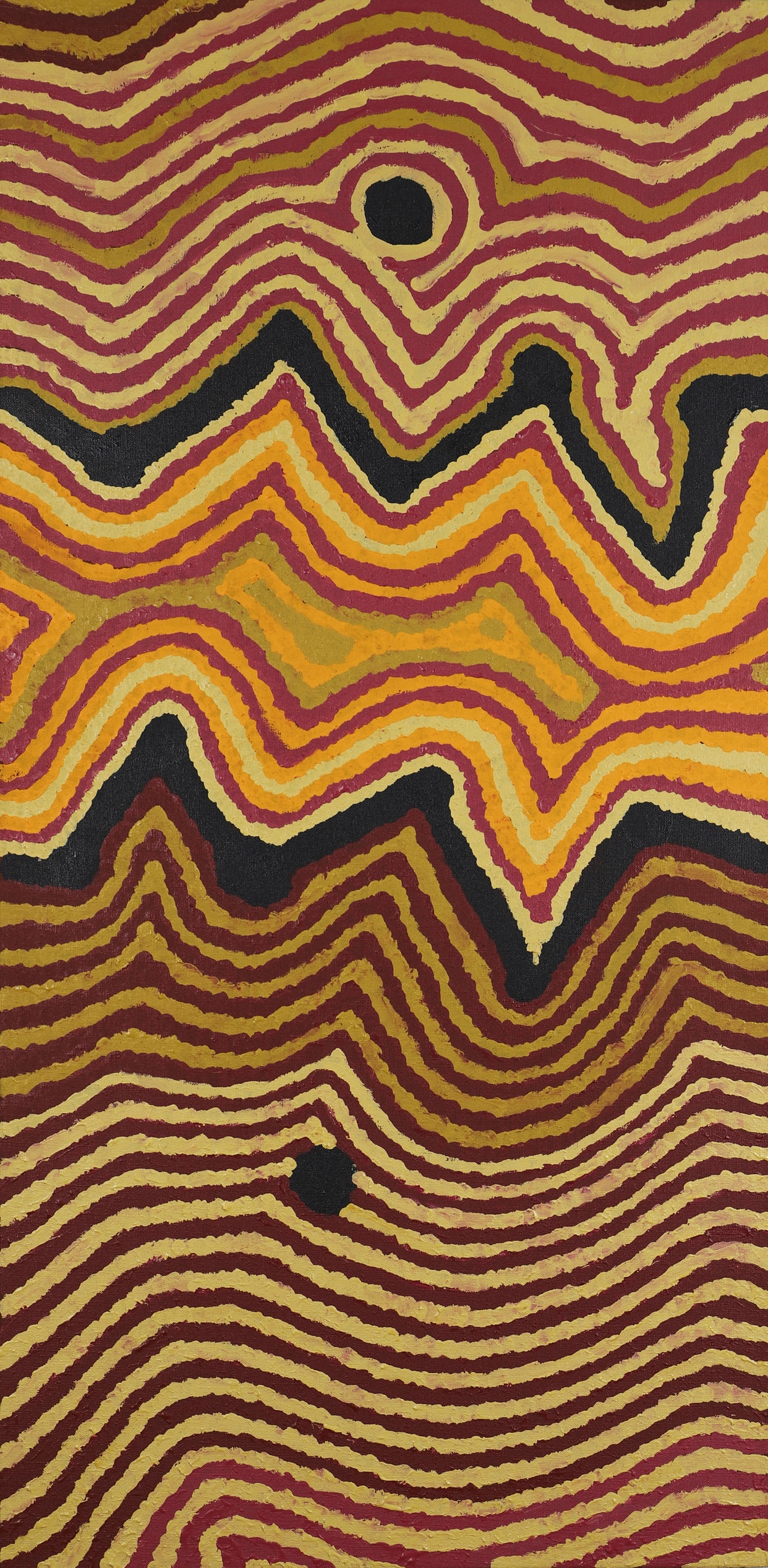
Wangkartu [104-19], Helicopter’s traditional country, is depicted here. The many parallel lines in the painting represent the tali (sand dunes) which dominate the landscape of the area. The two jagged black lines is a kiliki (creek), which has dried up.
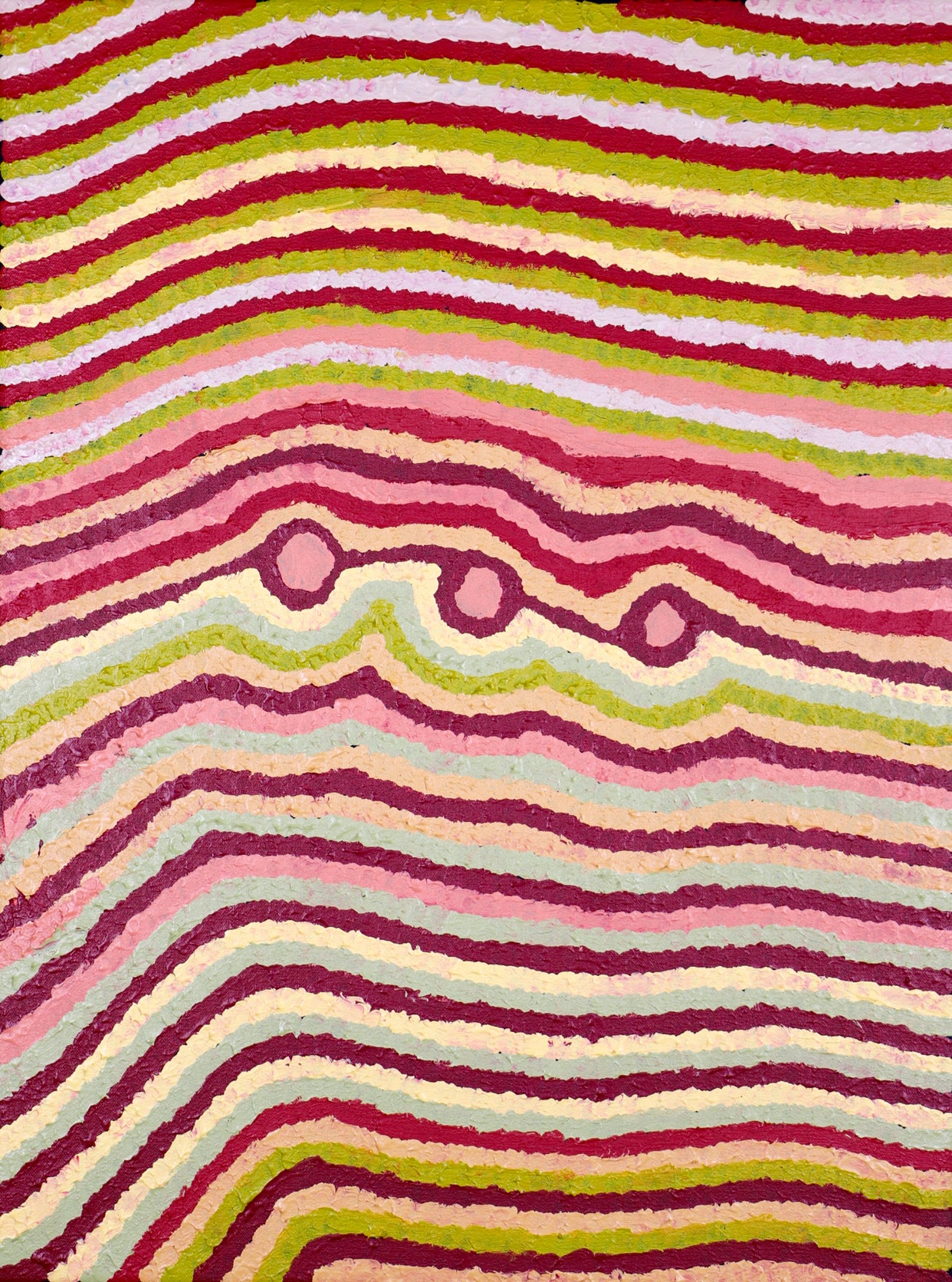
The tjurrnu (soakwater) of Wangkartu conveyed here was the life source for Helicopter as young man, travelling and hunting across the land with his family.
Helicopter Tjungurrayi sees Warlayirti Art Centre as a place to heal. “I love this painting, painting country every day. Make kurrunpa [spirit] feel good. When I finish my country painting that board, it make me feel good. I like to come doing painting old way. Family come here and paint, sit down and talk, tell good story.”
Browse Helicopter’s Bluethumb portfolio here.

